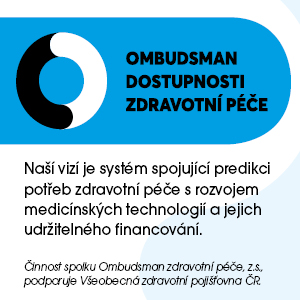


Číslo 7 - 8 / 2015
Dietary Guidelines for Ostomy Patients

An ostomy patient is in touch with a stoma care nurse who introduces him or her to the care of the ostomy and how to change the equipment. The stoma care nurse and the attending doctor provide the patient with general information regarding stoma care.
Patient: Good morning, nurse. I would like to ask what I can eat as I have had a stoma fitted?
Nurse: Good morning, Mr Collins. Now you’ve had thesurgery you should follow a low-residue diet and reduce or exclude consumption of food that can cause digestive problems.
Patient: I see. What does that mean?
Nurse: It is a low-fibre diet intended to help you reduce the load on the intestine. Therefore you shouldn't eat food containing coarse fibre, such as wholemeal bread, legumes (e.g. beans and pulses), vegetables causing flatulence (cabbage, kale, cauliflower) and you should mechanically process fruit, vegetables and potatoes before eating them. This means you either blend them, or finely grate them, or chew them carefully, and you should avoid food with hard skins and seeds.
Patient: And can I eat meat?
Nurse: Yes, you can, but only lean meat.
Patient: And what about dairy products?
Nurse: Yes, but only low-fat products, with less than 40% fat.
Patient: Ok, nurse. And what's next... when the diet is over? Or should I follow it permanently?
Nurse: Well, when we meet again, we’ll discuss what to do next. The diet of an ostomy patient is very individual. Generally speaking, it is recommended that you prepare your food by means of boiling, stewing or pot-roasting without fat. You should avoid roasting with fat, frying or adding roux (a mixture of fat and flour) as a thickening agent. You would benefit from eating small portions five to six times a day, not too hot, not too cold, and you should have sufficient fluid intake – 2-2.5 litres a day, drank separately from your food.
Patient: Very well. I'm really curious about how I'm going to cope with it.
Nurse: Don't worry, I'm sure you'll manage. And if you need anything or have any questions, just call me.
Patient: Thank you, nurse.
Nurse: You’re welcome. See you soon.
|
in touch |
v kontaktu, ve spojení |
|
equipment |
vybavení, zařízení |
|
attending doctor |
ošetřující lékař |
|
low-residue diet |
bezezbytková dieta, dieta s nízkým obsahem zbytků |
|
to exclude |
vyloučit |
|
intended |
určený; plánovaný, zamýšlený |
|
load |
zátěž; břemeno; náklad; napětí |
|
coarse |
hrubý, hrubozrnný; drsný |
|
wholemeal |
celozrnný |
|
legumes |
luštěniny |
|
kale |
kapusta |
|
cauliflower |
květák |
|
to blend |
rozmixovat; míchat |
|
to grate |
strouhat; skřípat (zuby) |
|
to avoid |
vyhnout se, předejít čemu |
|
lean |
libový; dietní |
|
dairy products |
mléčné výrobky |
|
by means of |
pomocí, prostřednictvím |
|
to stew |
dusit (maso) |
|
to pot-roast |
péct pod poklicí |
|
roux |
jíška |
|
curious |
zvědavý; podivný, zvláštní, kuriózní |
|
to cope with |
zvládnout, poradit si |
Lekce angličtiny pro časopis Florence připravuje překladatelská agentura ACP TRADUCTERA (www.traductera.com).
Ilustrační foto, zdroj: http://lepsipece.cz
Další články v tomto čísle
- Chceš udržet své zdraví? Najez se do sytosti a nelekej se námahy. (Hippokrates)
- Útoků na zdravotníky přibývá, bezpečnostních opatření a prevence také
- Chirurgie v extrémních podmínkách
- Psychologie v perinatální péči
- Lymfatické masáže
- Perimetrie
- O počtu dárců orgánů rozhoduje i schopnost komunikace
- Cukr nebo sůl. Obojí je lepší nepřehánět
- Zavádění lepku do stravy kojence
- Podání léčiv sondou





















